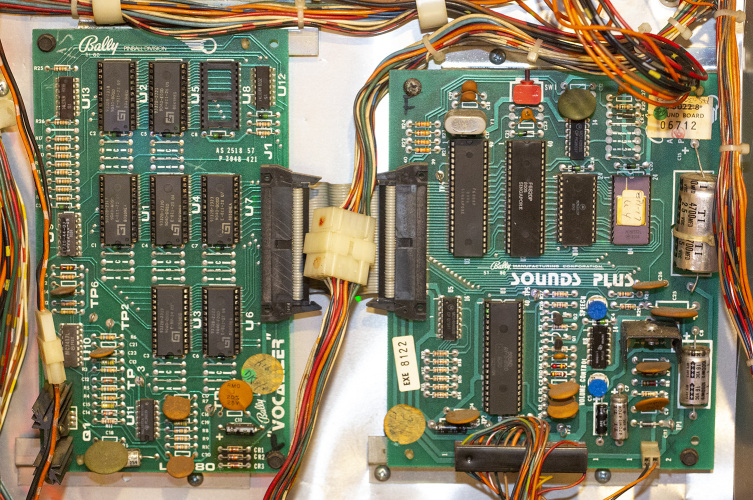Welcome to Xenon
The Sounds of an Early Solid State Pinball Game
Released in 1980, Bally's Xenon broke new ground for pinball. Electro Mechanical machines were on the way out with the last EM game having been released just a year prior; Solid State became the new normal for pinball with hardware that allowed for more complex games, synthesized and/or digitized sounds, and an array of other features. Xenon was not the first solid state machine or the first with digitized voices, however it was the first to feature female voices. All of the music, sounds, and voices in the game were developed and recorded by synth pioneer Suzanne Ciani, and now you can hear her original recordings! A mini-album was recently released on Suzanne Ciani's Bandcamp page featuring all of the vocals, music, and sound effects she recorded during development of the game in their isolated form. This is a rare and fascinating look behind the scenes of a classic pinball game and is worth checking out.
It can be easy to forget (or even realize, if you weren't born yet at the time) how limited the hardware was for this and other games at the time. While arcade games and pinball tended to have more advanced sound hardware than their home console counterparts, they were still very primitive and took some creativity to create sounds as well as they did. For Xenon, the sound chips used for the sampled sounds stored approximately five seconds of sound each; Xenon uses a total of seven chips found on the Bally Vocalizer sound board. This may not have been a lot to work with, but it was enough to provide a novel experience; few pinball games at the time (or video games in general) had voices at all at the time, and if a game did have speech included it was typically very brief (such as only at the start or end of the game). If you're curious, here are the samples used in the game and which of the seven chips contain the recording based on a posting from the Pinside forums:
- Chip U1
- “Xenon” (robotic male voice)
- “Xenon” (robotic female voice)
- Chip U2
- “Aaaaaaah” (female voice)
- Chip U3
- “Aah!” (female voice)
- “Ooww!” (male voice)
- Chip U4
- “Enter Xenon” (male voice)
- “Two”
- Chip U5
- “Welcome To” (female voice)
- “Xenon” (female voice)
- Chip U6
- “Try” (female voice)
- “Me Again” (female voice)
- Chip U7
- “Tube Shot” (female voice)
- “One” (female voice)
- “Exit” (female voice)
If you come across a Xenon pinball, it's possible you won't hear all of these voices during the game. The machine included four different sound modes that could be configured by the operator; two of the options replaced some of the voices and sound effects with simulated chimes, however since the chime sound was not sampled and generated by the PSG sound chip it isn't particularly convincing. The available sound modes as described by the manual are as follows:
- Setting “00”
Most switches associated chimes without feature background. - Setting “01”
Playfield switches associated chimes with background. - Setting “02”
Most scoring will have noise effect without background. - Setting “03”
Most all scoring will have a noise effect with background.
